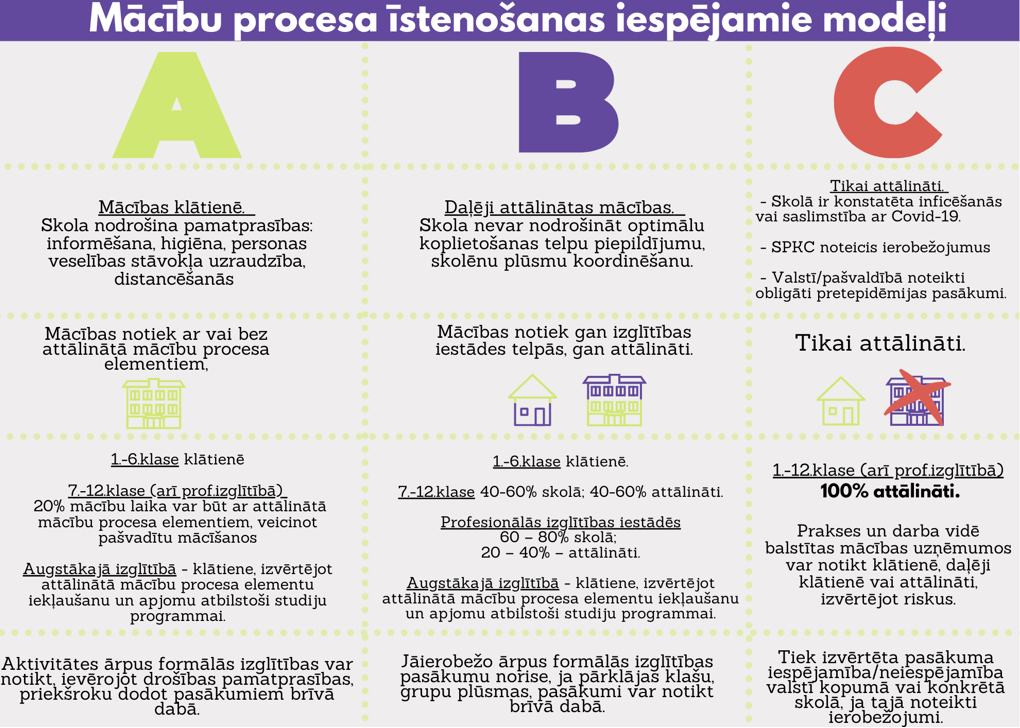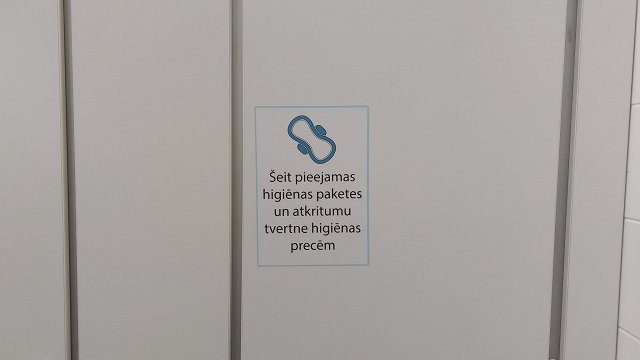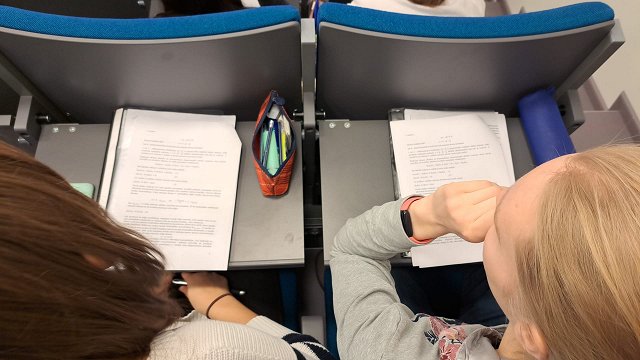At the moment, the educational process is planned to be organized on site as from September, provided that the epidemiological situation is similar to the current one. In addition to this scenario, plans for partially or fully remote education have also been developed, the Ministry said.
Plan A
On-site learning process at all levels of education will have to include the necessary safety measures: timely information, hygiene, monitoring of personal health and distancing. For example, a class or group is compared to a closed community without distancing requirements. However, there must be a distance between different classes.
Distancing in the educational facility is linked to the crowding of shared spaces, such as canteens. Schools will have to take care to avoid overlapping of groups and crowding. The Ministry of Education and Science (IZM) said, however, that the possibilities of each school differ.
“There may be different options: identifying different lesson schedules; using additional spaces if there is an opportunity and need; varying remote learning with on-site classes, or organizing classes in shifts,” the Minister for Education and Science, Ilga Šuplinska (New Conservative Party), said in a statement to the media.
Plan B
At the same time, recommendations have been made for the organization of the learning process in case the epidemiological situation is deteriorating and essential requirements cannot be met. Practice and working environment-based learning can take place either on site or remotely, taking into account risks.
If the educational establishment cannot provide distancing in shared spaces, causing overlap of classes or groups during breaks, the school should plan model B. This means that classes 1 to 6 are on-site, while classes 7-12 can be both on-site (40-60%) and remote. For vocational education institutions, 60-80% of the work would take place on the premises, 20-40% remotely.
In higher education, this ratio depends on the specific nature of the study program.
Plan C
Model C, which is organized purely remotely for classes 1-12, applies when a school has detected infection of COVID-19 or there are national limitations.
'If the Center (SPKC) identifies a case of COVID-19 associated with a particular educational institution, the Center will carry out an epidemiological investigation, identifying persons who have been in close contact with the infected. Specific anti-epidemic measures will be implemented,” said Jurijs Perevoščikovs, director of the SPKC's Department of Infectious Diseases and Prevention.

Separate recommendations for COVID-19 security measures and work organisation are also developed for pre-school education institutions, universities and sport events. They will be sent to educational establishments, sports federations and will be available on the ISM website.
































